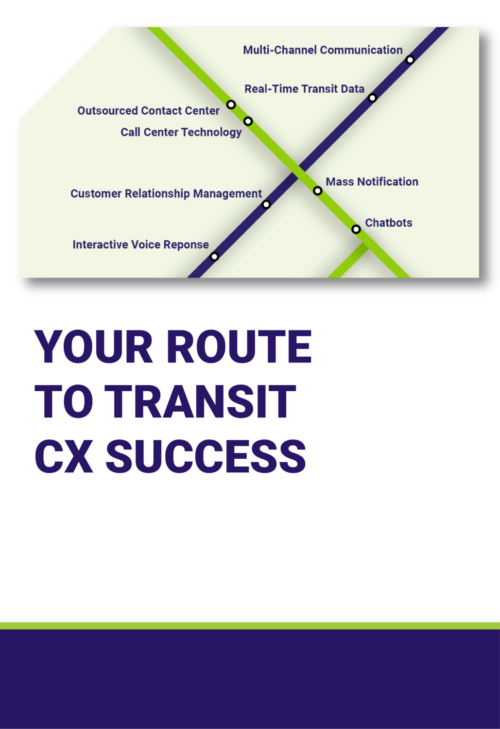Providing exceptional customer experiences (CX) in the fast-paced world of public transportation requires its own unique blend of human expertise and technological support. Customer service representatives in the transit space need to have a strong understanding of the system they support, as well as a genuine desire to help others. Here we’ll explore the key pieces needed for CX success, from the knowledge, skills, and customer focus needed by representatives to the technological tools that optimize their work and keep riders informed.
System Expertise
Your customer service starts here. From your live agents to your tech, every level of customer experience needs to be built on a foundation of knowledge of your transit system: understanding the routes, schedules, fares, and real-time service information for the entire transit system. This includes being aware of planned and unplanned disruptions that may occur.
Customer Service Representatives (CSRs) need to be able to identify and address a variety of customer needs, from trip planning to fare information to accessibility concerns, as well as the unique needs of paratransit customers. This is where the technology piece comes in.
Customer Relationship Management (CRM) Systems
A robust customer relationship management system is needed at the core of your customer experience (CX). These store customer data, past interactions, and ticketing information, allowing CSRs to personalize service and resolve issues efficiently. Tools such as Genesys Cloud put all of this at your CSRs fingertips and much more.
Real-Time Transit Data Access
To deliver the best CX possible, there needs to be direct access to live arrival times, delays, and route changes for CSRs and all complimentary services, like chatbots and IVR systems. This ensures that you provide accurate information to customers about their journeys.
Use AI To Be Where You Can’t
While not a replacement for human interaction, AI-based Interactive Voice Response (IVR) and ChatBots can handle simple inquiries and direct customers to the most appropriate resources, freeing up CSRs for more complex issues. APIs can link specific transit data to these “AI Assistants” to make sure all information is accurate with real-time updates.
Multi-Channel Communication
Direct contact with your website or phone number is the bare minimum in CX these days. Every transit system should have the ability to connect with customers through phone, SMS text messaging, web chat, email, social media, and mobile apps to allow for flexible and convenient communication wherever the customer chooses.
By effectively combining traditional customer service strengths of CSRs that have the knowledge and skill to focus on passenger needs, with these powerful technological advancements, transit agencies can create a seamless and positive experience for their riders. Services as important as public transportation require the best CX in the world, as so many people rely on it for their livelihoods. Creating this synergy between human and tech translates to a smoother, more positive experience for everyone who relies on public transportation.

